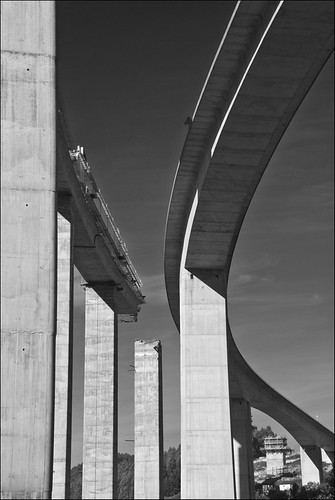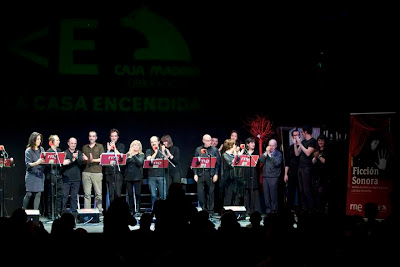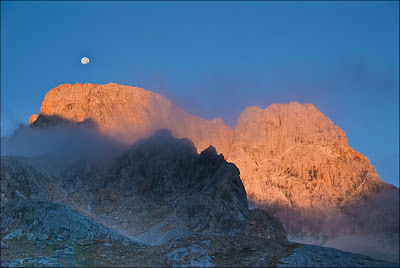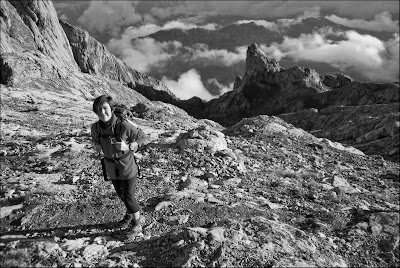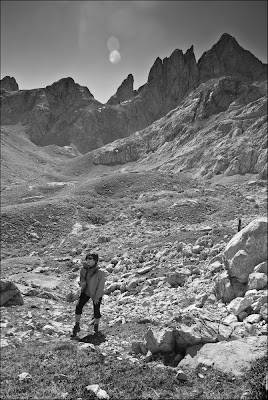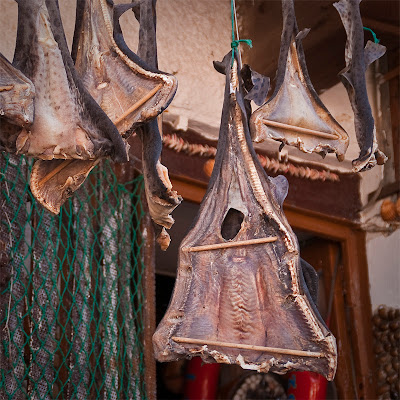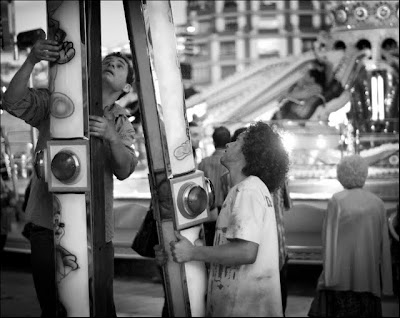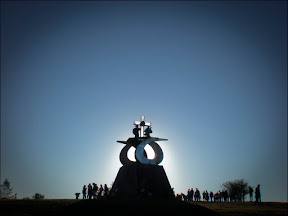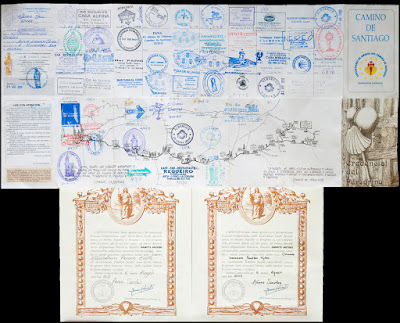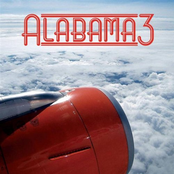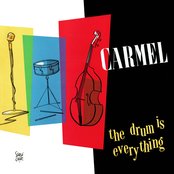Open water
As another wave washed over me and threw me off direction I thought back to what Lucas had been saying: “It’s the easiest of the travesías, it’s hard to get lost.” He had paused a second and then added, “It’s also the hardest”
Me and Lucas, before
In January this year I joined Ovimaster, the masters swimming club in Oviedo (Masters swimming is for swimmers who are no longer in university/competition but who still enjoy swimming clubs and meets). I didn’t do any of the indoor competitions but I chatted to the others about open water swimming. In Asturias between the end of June and the end of August there are open water events pretty much every weekend. Some are local affairs, with a handful of competitors, others are international, like Navia, where the whole town turns out and the 500 swimmers parade in the morning, part of the local fiesta. There are river swims (descents and ascents (against the current)) and sea swims (travesías). There are short swims of 800m and long ones up to 8km (although there are few takers, and the weather has to cooperate). The travesía del Musel had been described as the purest of the sea swims, because it had the most open of open water sections. The route leaves the industrial Musel port from inside the harbour, which is usually used by tankers, ferrys, cruise ships and big cargo vessels. Then as you leave the harbour you turn right, following the breakwater until that takes another right and heads inland while you strike out across the bay to the calmer waters of the leisure port 2km distant.
I hadn’t done any open water swimming but it sounded like a challenge I would enjoy. I started with a 1500m race in Gijón, along San Lorenzo beach, and then a 5000m river swim in Navia. And lots of laps in the pool.
Team Ovimaster
We registered at the finish line, then stripped down to whatever swimwear we favoured. Vaseline or grease was applied liberally (not goose fat, and not for warmth, this was to stop chafing) before 100 oiled swimmers walked down to two waiting buses ready to take us to the start.
Ready to get on a bus
We clambered over slippy breakwater blocks and sat half in and half out of the water waiting for the start. Some people swam lazy warm-up strokes. The woman next to me slipped and head butted my shoulder before apologising profusely and laughing. People started shouting for the race to start. I don’t know what we were waiting for but we spent 15 minutes in the water becoming increasingly impatient. Then we were told to get in and line up. This took a frustratingly long time. I spotted Carmen, from Ovimaster, who would probably swim a similar time to me, and we nodded at each other, we would stick together, we said. If we could.
swimming in the rain
And then we were off, and it was the usual press of bodies and jumble of strokes until the faster swimmers had gone and there was more space for the rest of us. Inside the harbour walls there weren’t too many waves, although I was out on the edge of the group nearer the middle of the harbour and the swell was noticeable. 700m or so to the first turn, out of the harbour. It was relatively easy to navigate, the harbour wall and the big cranes on the right, but even so, I zigzagged a bit and had to correct myself time and again, sighting every four breaths or so.
It was a different story as we neared the corner. The sea swell was much more pronounced, sighting was much harder, I struggled to time it to match the crests of the waves but they seemed to be coming from all directions. It felt like it took forever to make the turn and once I did, the swell got even bigger. In all probability it was less than 1m but it was intimidating. I swallowed a fair amount of water but I concentrated on breathing and sighting and kept going. Every now and again I would see one of the support kayaks but not the other swimmers. I realised someone was shouting at me and took a couple of breast strokes to listen to the kayaker telling me to head more to the right. I said thanks and reoriented myself and was off once again. Someone appeared suddenly next to me (the water was clear, but you couldn’t see anything more than a couple of metres away because of the turbulent surface), Carmen. We swam together for a minute before more waves pushed us in different directions. I tried to guess how long we had been swimming. The breakwater was still to the right, so I was still less than halfway. That was a bit unsettling, because I felt tired from battling the waves. I kept trying to breathe at the top of the swell and it was getting better but the breakwater was refusing to recede into the distance.
Another kayaker shouted and I reoriented myself, off in the distance I could see the tallest building in the Gijón skyline, the one everyone said to aim for. I continued, a kayak hit me and the kayakers apologised profusely, no problem I said and kept on. Every so often I had to lift up my steamed up goggles to make sure I wasn’t heading for Ireland. The breakwater finally disappeared from my view to the right, I could see the shipyards next to Arbayal beach in the distance. I kept on trying to keep close enough to the kayaks so I didn’t have to change direction too much.
On the east side of the bay the waves eased a little and the swimming was easier. All of a sudden I could see the big green lighthouse which marked the entrance to the harbour. Rain started to fall heavily, which felt quite nice. A man in a white launch yelled for me to head right, I was going towards the breakwater rather than the harbour entrance. I felt good, I was going to finish. As I reached the harbour wall and swam between it and the lighthouse I could hear a couple of people cheering, I thought it was Luciano (the president of Ovimaster) but couldn’t be sure, not being able to see much.
One slightly knackered swimmer on the jetty
Once in the harbour there was just 500m to go, in flat calm water, which feltlike a luxury. I swam past an enormous catamaran and reached the jetty where patient helpers told me to come out on all fours because the concrete was slippery. They reached a hand out and helped me to my unsteady feet. Knackered. I walked up the jetty, kissed Liz and enjoyed the feeling of having accomplished something difficult. Everyone agreed that it had been difficult, rough swimming. It took me an hour and twenty six minutes, which is the longest I have swum for.
Lucas came in five minutes ahead of me. He’s sixty seven.
Tags: ovimaster, sport, swimming
Posted in asturias 2 Comments »
